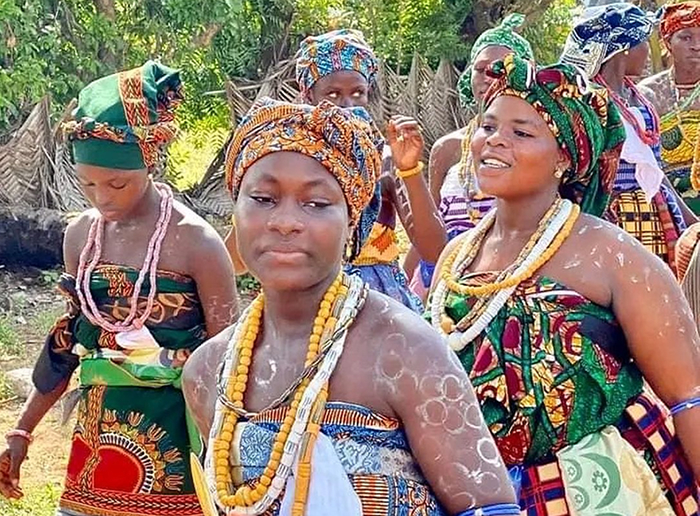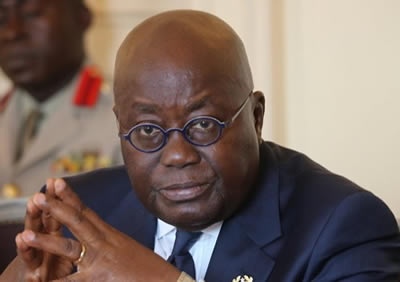Hogbetsotso Za – Exodus Of The Anlo People From Notsie
- Home
- Hogbetsotso Za – Exodus Of The Anlo People From Notsie

Hogbetsotso Za – Exodus Of The Anlo People From Notsie

Last Saturday, the people of Anlo climaxed their annual Hogbetsotso Festival with a grand durbar, after a break in 2019 due to the COVID-19 outbreak.
The festival is the celebration of the escape and freedom of the Anlo people from the Notsie Kingdom in Togo and for the first time in over a century, it was graced by the Asantehene, Otumfuo Osei Tutu II, as well as the Tafohene, Nana Opoku Minta II, and presided over by the Ga Mantse, King Tackie Teiko Tsuru II, while the Vice-President, Alhaji Mahamudu Bawumia, was the guest of honour.
As the cultural troupes displayed at the durbar ground at Anloga with great zeal and enthusiasm, one trend was common in most of the thrilling shows; and that was the Glimetoto – the exodus of the Anlo people from Notsie in Togo.
Far away from modern development, amidst thickets, coconut grooves and the belligerent roar of the ocean, the people of Anlo trekked valiantly to their present location in the Volta Region.
Tyranny of Torgbi Agorkoli
According to the account of the escape, at Notsie, the Ewes suffered under the tyranny of Torgbi Agorkoli I, whose cruelty was beyond description.
He forced his subjects to build a spiritually fortified perimeter wall around the kingdom.
Anyone who attempted to leave the kingdom was executed.
At one stage, King Agorkoli asked his subjects to make a rope from clay and made it clear to them that in the event of their failure to do so, there would be mass executions in the kingdom.
Then, a wise man, Torgbi Tegli helped the people to outsmart King Agorkoli by demanding a sample of the rope from him.
This angered the ruthless king and he took a stance to punish his subjects in no uncertain terms.
Great escape
Sensing evil from the king, the people decided to flee from Notsie.
Pursuant to that, they hatched a plot in which the women were told to pour domestic water persistently on a particular portion of the wall. The women obliged and the wall got weak with time.
On the night of the escape, there was an all-night drumming and dancing by the people, to transmit a false message to the king that all was well with his subjects.
In the middle of the night, Torgbi Tegli pierced the wet wall with a dagger, which became known as the dagger of liberation, to break the spiritual powers of the wall.
That created the exit for the Ewe people, who walked backwards out of the kingdom to fool King Agorkoli’s soldiers into thinking that the footsteps were rather of people walking into the kingdom.
At the Hogbetsotso durbar, the exodus of the Anlos was retold and depicted in very emotional, colourful and sparkling processions and in other forms.
The long journey of the Anlos through remote grass fields was revisited in dance forms.
That historical and triumphant journey by the Anlo people was renewed with a determination to preserve their heritage and bequeath noble values to the future generation.
Reconciliation
One important ritual which preceded the durbar was nugbuidodo and hanu dudu (reconciliation and communal feasting).
This is a peace-making rite in which all disputes are settled amicably to ensure harmony and unity during the Hogbetsotso celebration.
It is understood that the people of Anloland lived in harmony and worked as one unit to escape from Notsie.
The need for peace and unity as a nation was very loud in the festive message of the occupant of the Golden Stool of Asanteman when he said: “Let us maintain a healthier climate for social discourse and political interaction, remain united and live in peace to the glory of Ghana”.
Dr Bawumia commended the Anlo people for preserving their culture and maintaining the peace over the years, making Anloland an ideal area for tourism development.
For his part, the Awoamefia of Anlo, Torgbi Sri III, made a clarion call on Anlos living everywhere in the world to remain proud of their heritage and commit resources towards developing Anloland in peace.
Source: graphic.com.gh
Classic Ghana
Classic Ghana brings you into a fun world of arts, entertainment, fashion, beauty, photography, culture and all things in between. Let’s explore these together!


